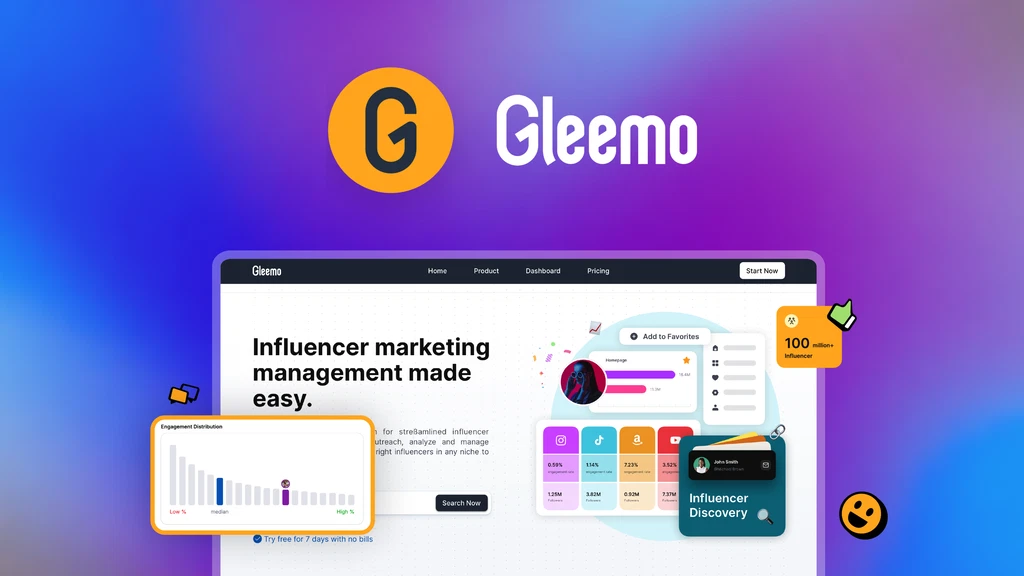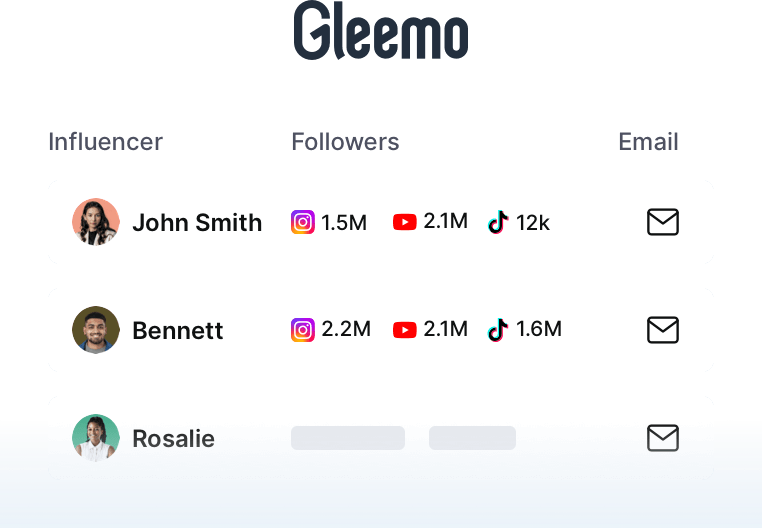In the competitive landscape of e-commerce, businesses are constantly seeking innovative ways to capture the attention of potential customers and build lasting relationships. Content marketing has emerged as a powerful tool that enables e-commerce brands to attract, engage, and convert customers while building brand authority and trust.
This article provides a comprehensive guide to leveraging strategic content marketing to boost your e-commerce success, complete with practical strategies, insights, and the integration of relevant tools like Gleemo.
Understanding the Role of Content Marketing in E-Commerce
Content marketing is a strategic approach that prioritizes delivering value to audiences through educational, actionable, or entertaining content rather than overt sales pitches. For e-commerce businesses, this method:
- Increased Organic Traffic: High-quality, SEO-optimized content improves search engine rankings, driving more organic traffic to your site.
- Enhanced Brand Authority: Creating informative content positions your brand as an industry expert, building trust and credibility.
- Improved Customer Engagement: Engaging content encourages interaction and builds a community around your brand.
- Higher Conversion Rates: Addressing customer pain points through content increases the likelihood of conversions.
- Customer Retention: Providing consistent value keeps your brand top-of-mind, encouraging repeat purchases and loyalty.
Unlike traditional advertising, which interrupts user experiences, content marketing for e-commerce integrates seamlessly into customer journeys. For example:

- A buyer researching “best running shoes for flat feet” discovers a blog post that compares products and links to a relevant product page.
- A tutorial video demonstrating “10 ways to style a scarf” keeps audiences engaged while subtly promoting a fashion brand’s inventory.
Defining Your Target Audience and Their Needs
A successful content marketing strategy begins with a deep understanding of your target audience. Conduct thorough market research to identify their preferences, needs, and pain points.
Steps to Define Your Target Audience:
- Conduct Market Research: Use surveys, interviews, and analytics tools to gather data about your audience.
- Develop Buyer Personas: Create detailed profiles of your ideal customers, including demographics, interests, and behaviors.
- Analyze Competitors: Study your competitors’ content and audience engagement to identify gaps and opportunities.
- Identify Content Preferences: Determine which content formats and topics resonate most with your audience.
Use analytics tools to gather:
| Data Type | Tools | Insights Gained |
| Demographic data | Google Analytics, CRM systems | Age, location, gender, income levels |
| Behavioral data | Hotjar, Kissmetrics | Browsing patterns, cart abandonment |
| Psychographic data | Surveys, social listening | Values, interests, lifestyle habits |
Example Buyer Persona:
| Attribute | Details |
| Demographics | Age 25-35, Urban Professionals, Middle Income |
| Interests | Health and Wellness, Fitness, Nutrition |
| Pain Points | Limited Time for Exercise, Difficulty Finding Healthy Meal Options |
| Shopping Habits | Online Purchases, Preference for Subscription Services, Value Quality over Price |
Creating Product-Focused Content That Adds Value
Product-focused content bridges the gap between customer needs and your offerings by positioning products as solutions rather than commodities. This requires a strategic shift from feature-centric descriptions to value-driven narratives that educate, engage, and convert.
Key Components of Effective Product Content
Compelling Product Descriptions
Your product descriptions should tell a story. They need to explain not just what the product is, but how it can make a difference in the customer’s life.
High-Quality Visuals
Visuals are often the first thing that catches a customer’s attention. Use high-resolution images and videos that showcase your product from different angles and in real-life scenarios. This helps customers visualize using the product themselves.
User-Generated Content Integration
Incorporating user-generated content (UGC) such as customer reviews, testimonials, and photos can greatly enhance the authenticity of your product pages. When potential customers see real experiences and positive feedback from others who have purchased the product, it builds trust and reassures them of the product’s value. For example, featuring a customer’s photo of them happily using your product with a short quote about their experience can be very persuasive.
Content Types and Their Objectives
| Content Type | Purpose | Example Format |
| Educational Guides | Solve problems or answer questions | “How to Choose the Right Mattress” |
| Product Comparisons | Highlight competitive advantages | “Organic vs. Synthetic Skincare” |
| Case Studies | Demonstrate real-world success | “How Brand X Increased ROI by 50%” |
| Interactive Tools | Engage users with personalized experiences | Quizzes, calculators, configurators |
By focusing on these elements and continuously refining your approach based on customer feedback and performance metrics, you can develop product-focused content that not only informs but also motivates customers to take action.
Leveraging Blogs, Articles, and Tutorials to Drive Traffic
Blogs, articles, and tutorials are foundational tools for attracting organic traffic, establishing authority, and guiding users through the buyer journey. When executed strategically, they can significantly boost visibility, engagement, and conversions.

Role of Blogs, Articles, and Tutorials in E-Commerce:
| Content Type | Primary Purpose | Key Benefits |
| Blogs | Educate and engage audiences | – Improve SEO rankings. – Position the brand as an industry resource. |
| Articles | Provide in-depth analysis | – Attract B2B or high-intent shoppers. – Support link-building campaigns. |
| Tutorials | Demonstrate product utility | – Reduce buyer hesitation. – Increase time-on-site and social shares. |
Strategies for Effective Blog Content:
- Identify Relevant Topics: Focus on trending topics, common customer questions, and industry insights.
- Create a Content Calendar: Plan and schedule posts consistently to maintain a steady flow of fresh content.
- Optimize for SEO: Use relevant keywords, meta tags, and descriptions to improve search visibility.
- Promote Across Channels: Share your content on social media, email newsletters, and other platforms.
Example Blog Post Topics:
“Top 5 Fitness Influencers MarketingTrends for 2025″
“How to Choose the Perfect Yoga Mat for Your Practice”
“10 Summer Skincare Tips for Glowing Skin”
“Best Kitchen Tools for Amateur Chefs”
Utilizing Social Media for Content Distribution and Engagement
Social media platforms offer e-commerce businesses a direct line to their target audience. They provide an excellent opportunity to distribute content, engage with customers, and build brand awareness.

Platform-Specific Strategies
Different social media platforms have unique user behaviors and content preferences. Tailoring your strategy to each platform can maximize your reach and engagement.
Instagram is highly visual and ideal for showcasing products through images and videos. Key tactics include:
- High-Quality Visuals: Post professional photos and videos that highlight your products in an appealing way.
- Instagram Stories and Reels: Utilize Stories for time-sensitive content and Reels for short, engaging videos that can reach a broader audience through algorithmic recommendations.
- Hashtags: Use relevant hashtags to increase discoverability. Create a branded hashtag to encourage user participation.
- Influencer Collaborations: Partner with Instagram influencers who can authentically promote your products to their engaged followers.
Facebook offers a more community-driven environment and is suitable for longer posts, discussions, and building brand loyalty.
- Engaging Content: Share blog posts, tutorials, and customer testimonials. Create discussion groups related to your industry.
- Facebook Shops: Set up a Facebook Shop to allow users to browse and purchase products directly from your page.
- Live Videos: Host live sessions to showcase products, answer customer questions, or provide tutorials, which can increase interaction and trust.
TikTok
TikTok is centered around short, creative videos and has a younger, trend-driven audience.
- Trends and Challenges: Participate in or create challenges related to your products. For example, a fashion brand could launch a styling challenge.
- Influencer Takeovers: Collaborate with TikTok influencers for takeovers where they create content using your products.
- Behind-the-Scenes Content: Give viewers a look at your brand’s story, from product creation to team culture, building a personal connection.
LinkedIn is professional and effective for B2B e-commerce or products targeting professionals.
- Industry Insights: Share thought leadership articles, market trends, and company news.
- LinkedIn Articles: Publish longer-form content to establish your brand as an expert in the field.
- Engage with Professionals: Participate in relevant groups and discussions to connect with decision-makers.
Pinterest is visually oriented and often used for product discovery and inspiration.
- High-Quality Pins: Create visually appealing pins linking to your product pages.
- Pinterest Shopping: Enable Pinterest Shopping to let users make purchases directly from your pins.
- Boards with Themes: Organize boards around product categories or lifestyle themes to attract targeted traffic.
Engagement Strategies
Engagement is a two-way street on social media. Actively interacting with your audience builds stronger connections.
- Respond to Comments and Messages: Show customers you value their input by promptly replying to comments, messages, and mentions.
- Create Interactive Content: Use polls, quizzes, and Q&A sessions to encourage participation. For instance, a fashion brand could ask followers to vote on their favorite outfit option.
- Run Contests and Giveaways: Incentivize followers to engage by offering prizes. Require actions like liking, sharing, or tagging friends to enter.
- Feature User-Generated Content (UGC): Repost customer photos or videos featuring your products, giving credit to the creators. This encourages more UGC and builds community.
Optimizing Content for SEO to Improve Visibility
Search Engine Optimization (SEO) is crucial for increasing your content’s visibility and driving organic traffic to your e-commerce site. Optimize your content by using relevant keywords, meta tags, and descriptions.
SEO Optimization Steps:
- Keyword Research: Use tools like Google Keyword Planner, Ahrefs, or SEMrush to identify relevant keywords.
- On-Page SEO: Incorporate keywords naturally into product descriptions, blog posts, and page titles.
- Technical SEO: Improve site speed, ensure mobile responsiveness, and fix broken links.
- Content Quality: Create high-quality, valuable content that keeps readers engaged.
- Backlink Building: Develop relationships with reputable websites in your industry to acquire quality backlinks.
SEO Best Practices:
- Use header tags (H1, H2, H3) to structure content.
- Include alt text for images and optimize image file sizes.
- Create comprehensive, in-depth content that addresses user intent.
- Regularly update existing content to maintain relevance.
Incorporating User-Generated Content for Authenticity
User-generated content (UGC) is a valuable asset for e-commerce content marketing. Consumers often trust peer opinions more than brand promotions. Encourage your customers to share their experiences, reviews, and photos of your products on social media and your website
Strategies for Encouraging UGC:
- Run Contests and Campaigns: Incentivize customers to create content by offering prizes or rewards.
- Feature Customer Content: Repost and showcase UGC on your social media platforms and website.
- Create Branded Hashtags: Develop a unique hashtag for your brand to encourage content sharing.
- Engage with Creators: Comment on and interact with customer-generated content to build community.
Types of UGC to Leverage:
| UGC Format | Best Use Cases | Platforms to Source |
| Customer Reviews | Product pages, email campaigns | Website, Google My Business |
| Social Media Posts | Social feeds, ads, landing pages | Instagram, TikTok, Facebook |
| Unboxing Videos | Demonstrations, tutorials | YouTube, TikTok |
| Testimonials | Case studies, homepage banners | Email, LinkedIn |
| Photo Contests | Seasonal campaigns, product launches | Instagram, Pinterest |
For example, GoPro effectively leverages user-generated content by encouraging its community to share their adventure footage. They frequently run contests and feature user videos on their social media and website, creating a strong sense of community and trust.

Analyzing Metrics to Refine Your Content Marketing Strategy
To ensure your content marketing efforts are effective, regularly analyze key performance metrics. Use analytics tools to track traffic, engagement, conversion rates, and other relevant data.
Key Metrics to Track:
- Traffic Sources: Identify which channels drive the most traffic to your site.
- Engagement Rates: Measure likes, shares, comments, and time spent on content.
- Conversion Rates: Track how many content viewers make a purchase.
- Bounce Rates: Determine how many visitors leave your site after viewing a single page.
- Social Media Metrics: Monitor follower growth, shares, and click-through rates.
Tools for Analytics:
- Google Analytics: Track website traffic, user behavior, and conversion paths.
- Social Media Insights: Use platform-specific analytics to measure social content performance.
- SEMrush/Ahrefs: Monitor SEO performance and backlink profiles.
- Gleemo: Analyze influencer campaign performance and engagement rates.

Conclusion & Key Takeaways
Strategic content marketing is a powerful driver of e-commerce success. By understanding your audience, creating valuable product-focused content, leveraging blogs and tutorials, utilizing social media, optimizing for SEO, incorporating user-generated content, and analyzing metrics, you can boost your e-commerce business’s growth and competitiveness.
- Audience Understanding: Conduct thorough research to create targeted content that addresses specific needs.
- Content Quality: Prioritize valuable, informative content that adds value to your audience’s journey.
- SEO Optimization: Implement SEO best practices to improve visibility and drive organic traffic.
- Social Media Utilization: Engage with your audience through platform-specific content and strategies.
- UGC Integration: Build trust and community by incorporating authentic customer content.
- Analytics-Driven Decisions: Regularly review performance metrics to refine and enhance your strategy.
- Tool Utilization: Leverage platforms like Gleemo to streamline influencer collaborations and content management.
FAQs
What is e-commerce content marketing?
E-commerce content marketing is a strategic approach focused on creating and distributing valuable, relevant content to attract and retain a target audience, ultimately driving customer action. It involves producing content that addresses customer pain points, highlights product benefits, and provides valuable insights to engage potential customers and convert them into buyers.
Why is content marketing important for e-commerce?
Content marketing helps e-commerce businesses attract and engage potential customers, improving SEO and increasing visibility. It establishes brand expertise and trustworthiness, nurtures customer relationships, and encourages repeat purchases and loyalty. Content marketing also drives organic traffic, boosts brand awareness, and leads to higher conversions and sales.
How can I optimize my e-commerce content for SEO?
Optimize your e-commerce content by using relevant keywords in product descriptions, blog posts, and page titles. Conduct keyword research, create high-quality content that engages readers, and build quality backlinks from reputable websites. This can improve your site’s visibility and drive organic traffic.
What is user-generated content, and why is it valuable for e-commerce?
User-generated content (UGC) is content created by customers, such as reviews, photos, and videos featuring your products. It’s valuable for e-commerce as it builds trust and authenticity. Consumers often trust peer opinions more than brand promotions. UGC also provides fresh, relatable content and fosters a sense of community around your brand.
How can Gleemo help with my e-commerce content marketing?
Gleemo is an influencer management platform that helps you find, analyze, and collaborate with influencers. You can discover influencers across Instagram, YouTube, TikTok, and Amazon, making it easier to connect with the right people to promote your brand. Influencers can help extend your reach, enhance credibility, and boost your content marketing campaigns.






